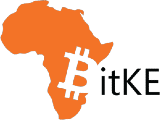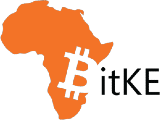According to April 2024 data from the International Monetary Fund (IMF), the big 5 African economies make up half of Africa’s GDP of $1.4 trillion.
The rest of Africa, 48 countries in total, have a combined GDP of $1.4 trillion, highlighting the deep economic divide within the continent.
Here are the top 12 economies in Africa in GDP:
1 SouthAfrica 
2 Egypt 
3 Algeria 
4 Nigeria 
5 Ethiopia 
6 Morocco 
7 Kenya 
8 Angola 
9 CôtedIvoire 
10 Tanzania 
11 Ghana 
12 DRC 
According to an October 2024 IMF economic outlook report on Sub-Saharan Africa:
- Growth in sub-Saharan Africa was projected at 3.6% in 2024, unchanged from 2023, with a modest increase to 4.2% in 2025 – insufficient to significantly reduce poverty or address development challenges
- Macroeconomic vulnerabilities persist and inflation remains high in many countries, while elevated public debt and rising debt service costs are crowding-out resources for development spending
- Policymakers face a tough balancing act in reducing vulnerabilities while addressing development needs and ensuring socially acceptable reforms amid tight financing constraints
[TECH] The African Internet Economy has a Potential to Reach 5.2% of the Continent’s GDP by 2025, Says Latest Google Report: The African Internet economy hs the potential to reach 5.2% of the continent’s G.. https://t.co/9qdLYt6ilQ via @BitcoinKE
— Top Kenyan Blogs (@Blogs_Kenya) November 17, 2020
“Sub-Saharan African countries are navigating a complex economic landscape marked by both progress and persistent vulnerabilities,” said Abebe Aemro Selassie, Director of the IMF’s African Department.
“While many of the region’s countries are among the world’s fastest-growing economies, resource-intensive countries – particularly oil exporters – continue to struggle with lower growth rates. Inflation is declining but remains in double digits in nearly one-third of countries. Public debt has stabilized at a high level, with rising debt service burdens crowding out resources for development spending.”
“While we are seeing some improvement in macroeconomic imbalances, growth remains insufficient to significantly reduce poverty or address substantial developmental challenges in the region.”
Follow us on X for latest posts and updates
Join and interact with our Telegram community
________________________________________
“I see in #Africa, there is so much excitement and so much appetite . . . we just want to be part of the story.” – @paoloardoino CEO, @Tether_to
Full interview: https://t.co/zY87Ewolbx $USDT pic.twitter.com/lvMyy8IYRg
— BitKE (@BitcoinKE) February 5, 2025
________________________________________


 5 Countries Are Responsible for Half of Africa’s GDP, Says IMF
5 Countries Are Responsible for Half of Africa’s GDP, Says IMF





